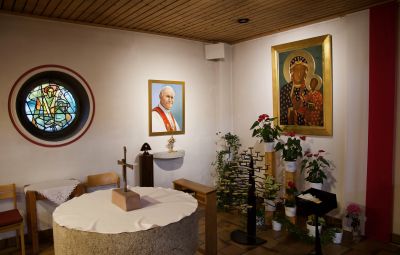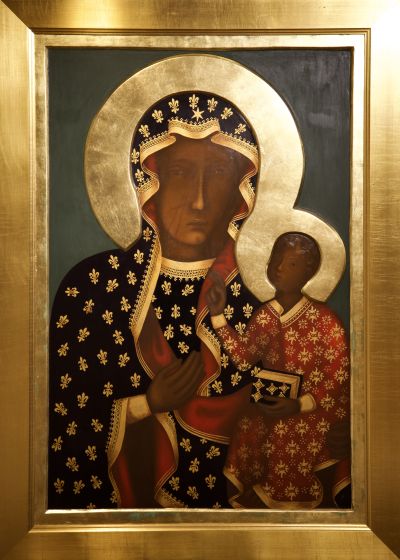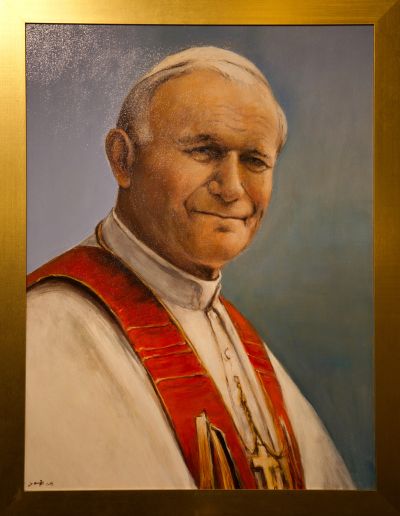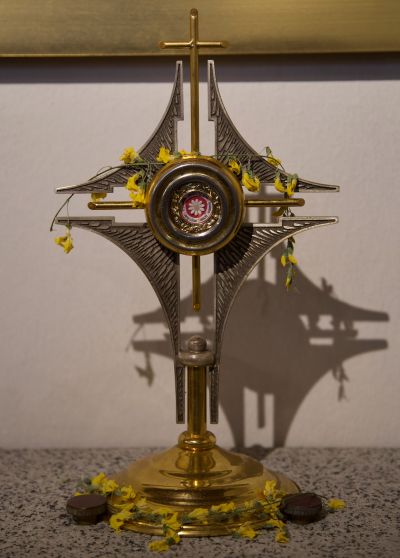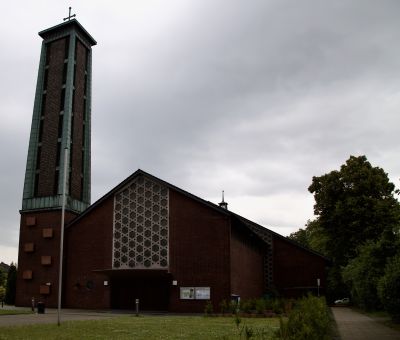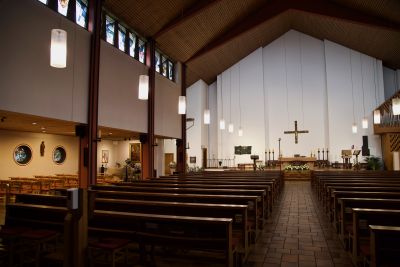The Black Madonna of Częstochowa in Essen-Altendorf

Today, the district of Altendorf in Essen does not really look like a Christian area, at least not at first sight. In fact, overall, if the press is to be believed, it has a reputation of being a problem area with high crime rates and much social conflict. It is therefore all the more surprising when you enter the St. Clemens Maria Hofbauer church (1751–1820; church built in 1957/58). The church served at least some of a Polish-speaking congregation in the diocese of Essen after 1985, and since 2006, it has been the centre of the entire Polish-speaking religious community there. On entering the church, named after a figurehead of the “Romantic” Catholic restoration during the 19th century, there is a sense of vibrant Catholicism everywhere. You immediately notice a full devotional ensemble consisting of the merciful Jesus, a blood relic of the Polish pope John Paul II (1978–2005) and, most importantly, the Black Madonna of Częstochowa. The image of Mary is even used as a cover photograph on the website for all the native speaker communities throughout the “Ruhr diocese”. The version on display in the church was created around 2008 and is now the ninth copy to be found in Essen-Altendorf. During the Corpus Christi processions in the community, her prominent position is assured.
A sacramental piety
All three of these objects testify to a vibrant Catholic faith with clearly identifiable Polish roots. The depiction of the merciful Jesus with the characteristic two rays of light emanating from his heart can be traced back to a vision of the Polish nun, Faustyna Kowalska (1905–1938), who has now been proclaimed a saint. John Paul II was the first Pole to become pope and his fight alongside Solidarność against the communist regime in his homeland has not been forgotten. Hardly anything more needs to be said in this respect. Ultimately, the copy of the Black Madonna, probably the most important object in this devotional triangle, reflects the national Catholicism of Poland, which continues to be of great importance. She is the focus of a large number of stories and legends, such as the miraculous defence of the Polish monastery in Częstochowa against Swedish soldiers in 1655 during the Second Northern War (1655–1660/61). The copy in Altendorf clearly shows the sword marks on Maria’s right cheek. These marks were inflicted on the original figure during an attack on the monastery in the 15th century, and were consciously left in place during the subsequent restoration work on the Black Madonna as a reminder of the events that occurred. The copy in Essen also includes these marks. The Black Madonna does in fact fit in well with the Ruhr region overall. After all, while the Golden Madonna may be regarded as the ‘queen’ of the diocese of Essen, the Black Madonna offers a kind of companion figure for Polish-speaking Catholics along the Ruhr; in Poland, the Black Madonna was proclaimed ‘queen’ of the nation in 1656. Anyone looking at the figure will quickly recognise that what may well be the most important relic for Polish Catholic pilgrims means more than just the veneration of Mary. The Madonna, with her black dress and golden lilies, which express her immaculateness, is holding the baby Jesus, clothed in red, in her hands, directing our gaze beyond herself to the son of God, who in turn holds the Holy Scripture in his left hand and blesses the viewer with his right. Here, she is presented in a similar way to the “Hodegetria” icon (Greek for “She Who Points the Way”).
Polish Catholicism, according to the Essen priest Jerzy Wieczorek SChr (Societas Christi pro Emigrantibus) is rooted above all in piety, which is kept alive by blessings of this kind, and by the sacraments. That’s probably the reason why during the pandemic, up to 4,000 viewers joined the congregation online for its Sunday services. In Germany and abroad, Catholics participated in the Eucharistic mass in Altendorf using the standard online streaming services. Father Wieczorek from the Christi society for the pastoral care of emigrants (Gesellschaft Christi für Emigrantenseelsorge) is responsible for the Polish community there, together with another priest and a nun. He points to another aspect of sacramental piety of this kind: the opportunity for daily confession, which is in great demand. It is not unusual for confessions to last between two and three hours. These forms of religious observance, as well as other activities such as a Sunday school for children, are reminiscent of aspects of Catholic life that were commonplace in the Ruhr region during the 19th and early 20th centuries: a close network of groups and associations which followed the liturgical rhythm of the festival calendar. While by the 1960s at the latest, the German-speaking Catholic community was in decline, in Essen-Altendorf in 2021, it still appears to be very active. However, in earlier times, there was no such thing as “one single” Catholic environment, any more than there is a single type of Polish Catholicism today. The Polish-speaking community, which also has branches in Mülheim and Lüdenscheid, includes members who speak different dialects and who follow different religious traditions from Poland.
